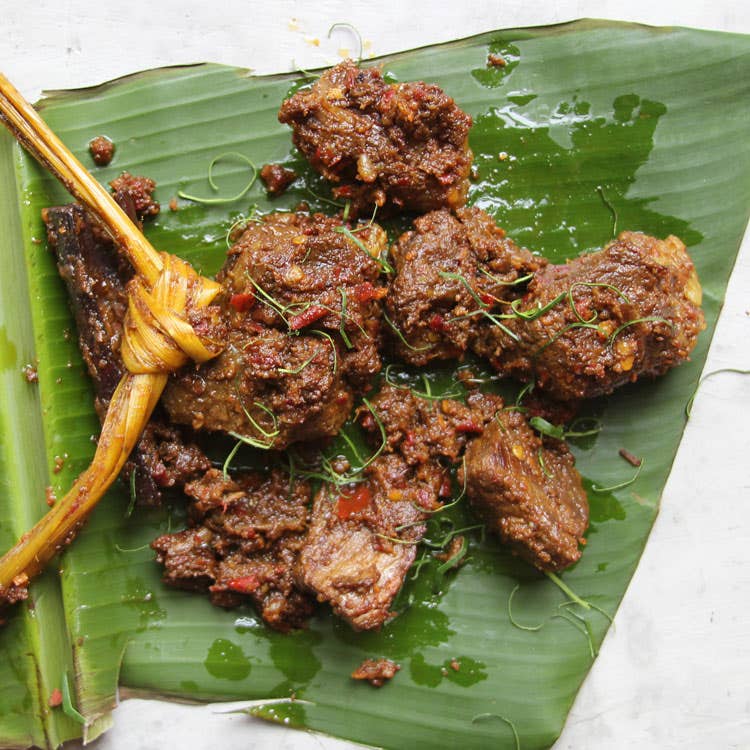
One of the most amazing things I’ve ever eaten was at a potluck lunch. I was all of 19, an American traveler on my first visit to Indonesia, and the dish proved life changing. It was beef rendang_,_ a specialty of West Sumatra, an Indonesian province with a celebrated cuisine, and it helped seal my fate as a person whose life’s work would revolve around cooking and eating.
Why did rendang rock my world? The glistening meat, fall-apart tender, was coated with a thick sauce of such complexity that I was at first taken aback—and, a moment later, smitten. In it, nutmeg, cloves, cinnamon, garlic, chiles, and a host of other ingredients harmonized. I was accustomed to American-style beef dishes—stews, pot roast—made with just a few seasonings. They were more liquidy and less flavorful than this Southeast Asian preparation. I was left with such a curiosity about the dish that I had to learn to cook it.
When I did, rendang amazed me even more. Instead of searing the meat before cooking it in liquid, as is done with a Western-style braise, I learned that I needed to reverse the process: I started with an aromatic melange including chiles, ginger, and fresh turmeric, all blended with coconut milk to make a sauce. Next came nicely marbled cubes of beef—in Indonesia, water buffalo is often the meat of choice—which I cooked in the sauce, ever so slowly. For hours the uncovered pan gently bubbled, sugars caramelized and fats rendered, until the sauce turned sludgy, the meat yielded to a fork, and the liquid had all but evaporated. Finally, the beef seared in its own fat and that of the coconut milk. It ended up as dark as chocolate, gleaming, and intense. I devoured it atop a hillock of rice, as the dish is eaten in Indonesia. There, rendang is a homespun preservation technique, used for everything from beef to chicken. The method is Indonesia's answer to charcuterie: The seasonings and salt cure the food.
Though it's traditionally a dish made to travel with, I find rendang so delicious that I gobble it up as soon as it's ready. It's Indonesia's gift to me, the finale to a day spent blessedly slowed down.
Keep Reading
Continue to Next Story










